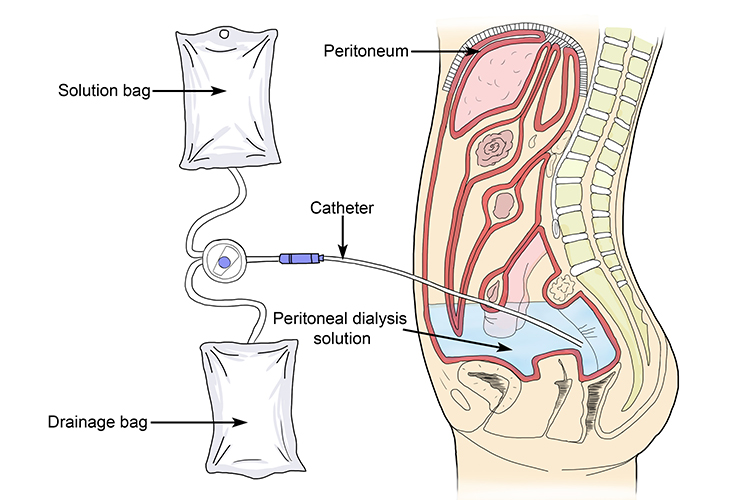How peritoneal dialysis works
A bag containing a special cleansing solution (the dialysate) is attached to a catheter, a flexible tube that goes into the abdominal cavity.
The cavity is then filled with the dialysate, which absorbs waste from the fine blood vessels in the lining of the cavity (the peritoneum), and transfers substances such as salts and glucose to or from the blood if needed to maintain balance. It works just like the artificial membrane in the haemodialysis machine, but it’s a LIVING membrane inside your body.

A few hours later, the solution is released from the abdominal cavity via the same catheter, into a second bag, which is then disposed of. New fluid, from a fresh, bag is then passed into the peritoneum and the process repeated.
Patients need to perform this procedure several times a day.




